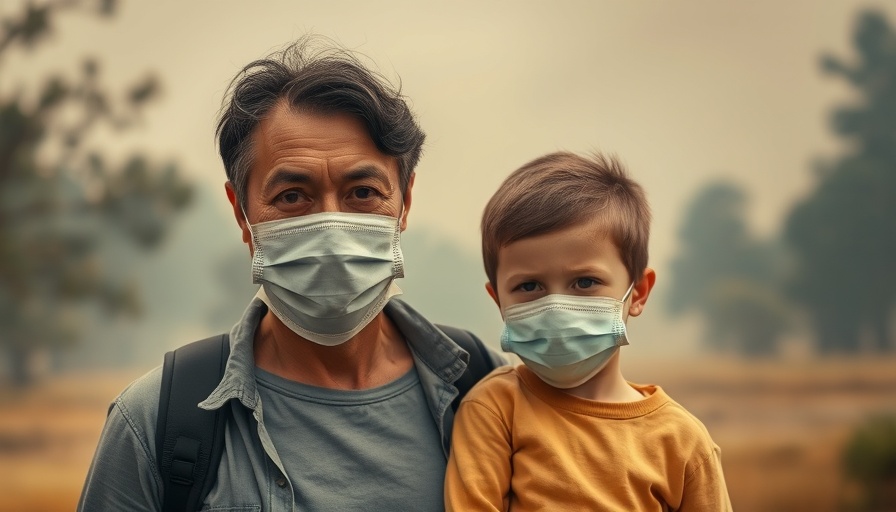
Understanding Wildfire Smoke and Its Impact on Child Health
As wildfires continue to increase in frequency and intensity across the globe, the implications for public health—especially for vulnerable populations like children—cannot be overstated. Wildfire smoke is a complex mixture of gases and tiny particles that can have significant negative health effects, particularly on the respiratory system of children. Studies have shown that exposure to wildfire smoke can exacerbate asthma and other chronic respiratory issues, underscoring the need for proactive measures and awareness for digital nomads who may travel to regions affected by wildfires.
Why Children Are More Vulnerable
Children are at a higher risk when it comes to wildfire smoke exposure due to their developing respiratory systems and higher rates of ventilation compared to adults. As noted by both the CDC and recent research, children with pre-existing respiratory conditions like asthma experience heightened symptoms, including difficulty breathing, when exposed to airborne pollutants such as those found in wildfire smoke. Therefore, it is crucial for parents and caregivers to take extra precautions during wildfire season.
Tips for Digital Nomads Living in Fire-Prone Areas
For digital nomads traveling or residing in areas at risk of wildfires, there are several health and wellness strategies you can adopt to safeguard your children from harmful smoke exposure:
- Stay Informed: Regularly check air quality reports and understand local advisories regarding wildfire events. Many regions provide real-time alerts when air quality deteriorates due to smoke.
- Indoor Comfort: Enhance indoor air quality by keeping windows and doors closed, using air purifiers, and ensuring that HVAC systems are equipped with proper filters.
- Prepare for Evacuation: Keep a kit ready with essential items, including medicine and non-perishable food, in case evacuation becomes necessary.
Practical Health Tips During Wildfire Events
During a wildfire smoke event, taking proactive measures can help minimize health risks. Here are recommended actions:
- Children should remain indoors as much as possible, especially during periods of excessive smoke. If they must go outside, consider having them wear a mask designed to protect against smoke particles, as standard masks may not offer adequate protection.
- Monitor your child's health closely for any symptoms of respiratory distress, such as coughing, wheezing, or shortness of breath. Seek medical assistance if symptoms persist or worsen.
- Avoid strenuous activities outdoors when smoke levels are high, as this increases the likelihood of respiratory complications.
The Future of Wildfire Impact Studies
Recent studies have begun to delve into the long-term effects of wildfire smoke exposure, particularly focusing on how it might influence children’s respiratory health later in life. Research indicated that developmental exposure to wildfire smoke leads to early initiation of respiratory medication use among children, suggesting potential risks that may span years after initial exposure.
Understanding the complex relationship between wildfire smoke and pediatric respiratory health is crucial, particularly as climate change continues to exacerbate wildfire conditions worldwide. Studies hope to refine the tools and strategies to mitigate the impact of smoke exposure during critical developmental windows.
Key Takeaways for Parents and Caregivers
The health risks posed by wildfire smoke to children are significant, necessitating an informed and proactive approach by parents and caregivers, particularly those in transient work situations like digital nomadism. Staying abreast of air quality reports, altering outdoor activities according to smoke levels, and preparing an emergency kit can be essential steps in safeguarding children’s respiratory health while enjoying the freedom of mobility.
 Add Row
Add Row  Add
Add 




Write A Comment